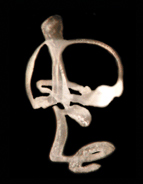
Institute for Biology and Molecular Genetics
Thomas Schimmang
| HOME |
| PROJECTS |
| PEOPLE |
| PUBLICATIONS |
| COLLABORATORS |
| CONTACT |
| OPEN POSITIONS |
| FUNDING |
FGF signalling |
Functions of FGF genes during inner ear development and differentiation |
Fibroblast growth factors (Fgfs) are required for survival and organ formation during embryogenesis. Fgfs often execute their functions redundantly. Previous analysis of Fgf3 mutants revealed effects on inner ear formation and embryonic survival with incomplete penetrance. Here, we show that presence of a neomycin resistance gene (neo) replacing the Fgf3 coding region leads to reduced survival during embryogenesis and an increased penetrance of inner ear defects. Fgf3neo/neo mutants showed reduced expression of Fgf4, which is positioned in close proximity to the Fgf3 locus in the mouse genome. Conditional inactivation of Fgf4 during inner ear development on a Fgf3 null background using Fgf3/4 cis mice revealed a redundant requirement between these Fgfs during otic placode induction. In contrast, inactivation of Fgf3 and Fgf4 in the pharyngeal region where both Fgfs are also co-expressed using a Foxg1-Cre driver did not affect development of the pharyngeal arches. However, these mutants showed reduced perinatal survival. These results highlight the importance of Fgf signaling during development. In particular, different members of the Fgf family act redundantly to guarantee inner ear formation and embryonic survival. Abstract from: Inactivation of Fgf3 and Fgf4 within the Fgf3/Fgf4/Fgf15 gene cluster reveals their redundant requirement for mouse inner ear induction and embryonic survival. Zelarayan L, et al. Dev Dyn. 2021. PMID: 34719815 Other recent publications:
|
Instituto de Biología y Genética Molecular
Universidad de Valladolid - Consejo Superior de Investigaciones Científicas
C/ Sanz y Forés s/n
47003 - Valladolid - SPAIN
Phone: (+34) 983-184-818 Fax: (+34) 983-184-800
schimman@ibgm.uva.es
© Thomas Schimmang and www.cytfusion.com